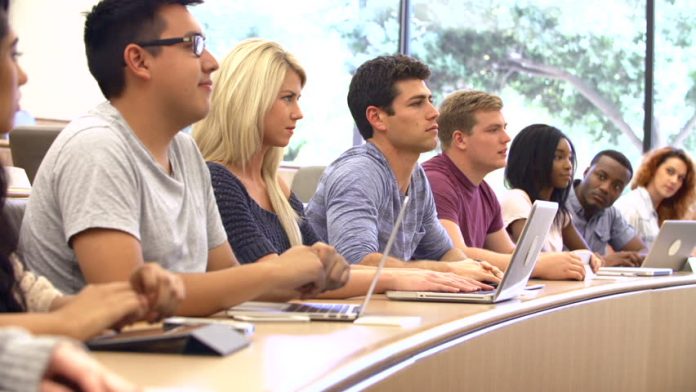The 21st century is undoubtedly an era defined by digitisation, with most people spending the majority of their time every day, in front of a screen. Smartphones, tablets, and laptops have become an integral part of our lives, and even, necessities, for countless people in various lines of work. This is especially true for students today, as these tools open the doors to an almost infinite storehouse of resources that they can utilise for their projects and assignments. Thus, with almost every aspect of today’s modern world having shifted online, it is only the next logical step for education to do the same, as well. Leveraging this limitless potential and power of the internet, many institutions today offer online courses to students, so as to cater to a wider range of people. By designing their courses to be compatible with a multitude of devices, these institutions have adopted the practice of responsive learning. Mentioned below are a few of the ways in which responsive learning can offer significantly greater value in education, compared to traditional methods of imparting knowledge in a physical classroom:
Multi-device support
One of the biggest advantages of responsive learning is the multi-device support that it provides. Courses can be saved and continued through multiple devices seamlessly, without any interruption or lag. The progress of the student is also trackable, which not only keeps them aware of how they are faring, but also offers valuable insights to improve themselves constantly.
Learning on the go
Responsive learning provides students with a way to learn while they are travelling. The biggest advantage of having content on your mobile devices is the flexibility that it provides in terms of how you are studying. Thus, online courses make it easier for people to consume knowledge, even when they are on the move.
Convenience of time
Flexibility of time is another advantage of responsive learning. It saves time in terms of travelling to and from traditional classrooms, by transporting the very classroom to the virtual world. Additionally, with this new technology, students can now utilise their time more effectively, by studying whenever they want. This is especially useful for students who also have full-time jobs, as it allows them to study after their working hours, as per their convenience.

Better collaboration
Responsive learning provides students with a way to meet and engage with like-minded students from all around the globe. It facilitates better collaboration by creating forums that encourage active discussions and online projects for students to work on together. This helps make them more culturally aware, and also explore various different perspectives on the same topic.
Ideal for remote students
This form of learning is particularly helpful for students who live in remote areas. Responsive learning gives them a better quality of education, as well as the convenience of studying from their homes. It saves them the trouble of having to travel too much to get the education they want, from their preferred university. For example, a student living in Nashik can easily study courses from an institution like Stanford University.
Innovative content structure
Responsive learning breeds creativity in terms of teaching pedagogy. It allows educators to think out-of-the-box, and come up with innovative content delivery systems, like videos, games, and virtual labs. For example, the history of the Battle of Panipat can be taught to students through an interactive multiplayer online game of strategy.
High learning retention
Due to the innovative teaching styles that can be utilised in this form of learning, students often have a higher learning and retention rate. With traditional teaching mediums like textbooks, several students simply try to memorise what they read, to fare well in the examination. The interactive approach that responsive learning provides can help students to not only score well in their exams, but actually retain the lessons they have learnt.
Individual attention to each student
For educators, responsive learning provides a unique advantage where they are able to concentrate on individual students. Due to the ease in tracking individual performance, educators can constantly stay up-to-date on which student to focus on, and devote more attention to. For students, this means a better education, as they can now focus on their weaknesses with the help of educators.

Better revision of lessons
With traditional classroom lessons, it is often difficult to revisit and understand what has been taught. If a student happens to be absent on a day, he or she misses out on what was taught in the previous lectures, and hence, has to depend on notes borrowed from friends, which might not always be reliable. With responsive learning, they can access the same lecture at any time, and therefore, maintain their quality of education, even when they are unable to attend classes. Additionally, it also helps facilitate better revision, as students can simply go through the entire lesson when they are nearing their exams.
Responsive learning is definitely the future of education, and through all the aforementioned factors, provides an enhanced learning experience. Students are more engaged in their lessons, and aware of their progress. The additional time and location flexibility only improves their experience, in terms of better understanding and enhanced involvement in their online classrooms.
*This disclaimer informs readers that the views, thoughts, and opinions expressed in the text belong solely to the author, and not necessarily to the author’s employer, organization, committee or other group or individual.





























